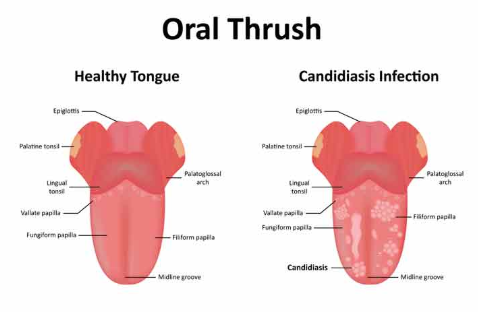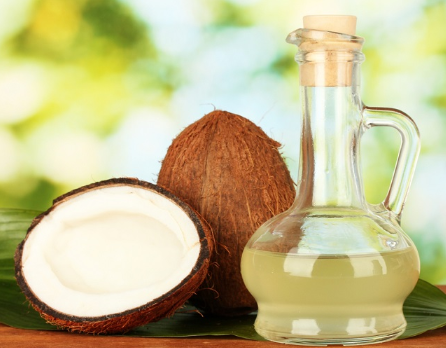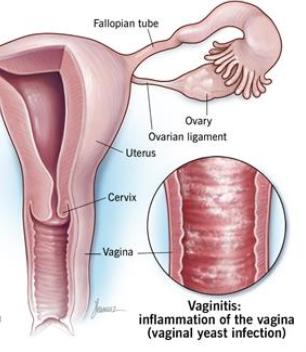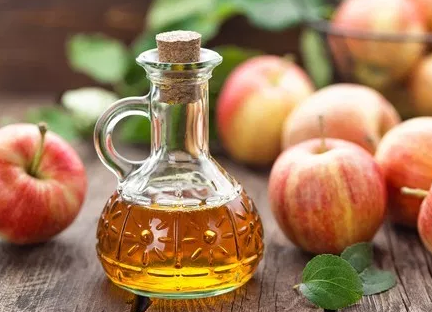Oral thrush as it is commonly known is the infection of yeast that takes place inside your mouth. This condition can also be referred to as oral candidiasis. The fungus infection usually develops in the mucous membranes inside the mouth. The infection is mostly caused by a fungus species known as candida albicans although it can as well be caused by another species called candida glabrata.
Oral Thrush or Yeast Infection Facts
- It affects both males and females equally and it is not a cause of major problems that may call for emergency.
- Moreover, this condition is commonly seen in people who have a weak immune system.
- Also if you happen to be undergoing chemotherapy or radiotherapy on your head you can be a regular victim of oral thrush.
- If you happen to be taking steroids, wear dentures on your gums, or have diabetes, oral thrush will be your common friend
- Oral thrush is commonly identified with white substances in the mouth lining.
Yeast Infection in Mouth Causes
For you to know that you are suffering from yeast infection in your mouth is first of all by realizing white deposits in the mouth lining including the tongue and gums. In some cases oral thrush may cause sores in the mouth that are covered with a creamy substance which when removed they become red and painful. When hot food or hard food passes on them they may bleed and become irritated. Usually, the infected mucus membrane in the mouth breaks up and become rad and inflamed.
What are the causes of yeast infection in mouth?
Yeast infection in the mouth is mainly caused by the overgrowth of naturally existing yeast in the mouth which is normally harmless in its natural state. An overgrowth of yeast in the mouth can be caused by several conditions that we are going to discuss below. Usually, natural yeast in the mouth is kept under control by naturally existing good bacteria that make sure that the yeast does not grow beyond its normal level. If it happens that the good bacteria is compromised, then you will end up developing yeast infection in mouth. Other risk factors of yeast infection in mouth may include the following:
- Weak immune system
People who have weak immune system may be due to poor nutrition or infection by immune weakening disease such as HIV/AIDS and leukemia are usually affected by oral thrush frequently. This is because their bodies lack strength to prevent itself from any opportunistic infections such as yeast infection. Normally, strong immune systems use good micro-organism to put the naturally existing yeast under control. When the balance is affected due to weak immune system therefore the yeast begins to overgrow beyond the required level.
- Chronic diseases such as Diabetes and anemia
Diabetes is a disease that affects the normal balance of blood sugar in the body. Yeast is known to feed on sugar or contents of sugar in the body. If the blood sugar in the body is beyond its normal state, this means that yeast is provided with increased food supply and therefore increased growth.
Also anemia is a condition that affects the blood content in the body and it clear that it will cause a problem to the natural existence of yeast in the body.
- Dry mouth illness
Although yeast infection in mouth itself causes dry mouth and cracks around the mouth, other infections that may lead to this symptom may as well give room for the overgrowth of yeast in the mouth. For example, if you happen to be suffering from cold sore or flue, chances are that you may end up also suffering from oral thrush.
- Overuse of antibiotics and corticosteroids medications
Antibiotics are said to also mess up with the naturally existing good bacteria that monitors the growth level of naturally existing yeast. Drugs are generally known to have side effects and some of them may include giving rise to other infections such as oral thrush. If you are a victim of oral thrush due to the use of certain drugs, you may talk to your doctor to see you can stop the use or switch to another drug.
- Poor nutrition
If you do not live a healthy life by eating foods rich in high nutrients value you can end up being frequently visited by numerous diseases such as yeast infection in mouth. Those people who like eating junk foods which are highly rich in sugar content are easily affected as the provide increased food to the yeast hence making it to overgrow.
- Poor oral hygiene
According to a dental research done by Colgate organization you are supposed to clean your mouth after every meal to remove all the particles that could have stuck in the mouth crevices. However, some people may take even more than a day before brushing their teeth or cleaning their mouth. This will provide a breeding ground for different types of infections including oral yeast infection.
- Smocking cigarette
Cigar contains narcotic content that is very harmful in the mouth. People who smoke cigar may end up with decaying teeth, sores on gums and tongue and even dried mouth. As we have said above, any condition that causes drying of the mouth may open up the skin for opportunistic infections such as yeast infection in mouth.
- Wearing of dentures
Wearing of dentures on your teeth may cause fractures on the gums may be due to friction and as we all know the inner mouth skin is very thin enough not to withstand any much pressure. When your inner mouth skin is fractured, it allows the entry of disease causing organisms that may end up overgrowing to cause infections. A fact you should know about yeast infection is that it likes dwelling on an open skin surface.
- If you recently had an organ transplant
Personally I don’t know how an organ transplant would cause oral thrush but researches I have read suggests that, if you happen to have undergone any organ transplant you may end up being a victim of frequent yeast infection in the mouth. Some say while you undergo organ transplant you lose a lot of blood and may become anemic which is a common cause of yeast infection in mouth.
There are many other reasons that may result in oral thrush including injuries in the mouth and it is good to know them all so that it can be easier when it comes to treating the condition. We are going to provide links that will enable you read more on this condition so that you have enough information about it.
What are the symptoms of yeast infection in mouth?
While the infection is still in its early stages, there is usually no sign that can be detected for this condition. However, while the infection advances and the fungus continue to grow you may start experiencing some of the following symptoms:
- Presence of white creamy substances that cover bumps formed either on the tongue, cheeks, gums or even the roof of mouth.
- If the bumps are scraped or burned by hot food they may start to bleed
- Pain and irritation from the bump
- In severe cases the corners of the mouth may become dry and start to crack
- If your tonsils are affected you may have some difficulties when it comes to swallowing food
Yeast infection in mouth can also affect breast feeding children. In this case, some of the symptoms you have to may include the following:
- White patches in the mouth
- Difficulty in breast feeding
- Fussiness
- Irritation in the mouth of the baby
In case your baby is suffering from oral thrush you may as well get infected with the condition in the areas around your breasts as the baby may have passed the infection to your skin while breast feeding. Also, if a mother is infected with skin yeast infection, she can pass the infection to the child while breast feeding.
Is oral Thrush Contagious
Yeast infection in mouth can be passed from one person to another if practices that encourage this passage are put in place. As we said above, a mother who is infected by skin yeast infection on the areas around the breast can transfer the infection to her baby while breast feeding. On the same case a breast feeding child that is infected with oral thrush can transfer the infection to her mother.
In the other case if it happens that you use contaminated bottle nipples between two or more children you may end up transferring the infection from one child to another.
Generally, yeast infection in mouth can be contagious so long as the conditions that encourage it being transferred from one human to another are present. Some people argue that yeast infection in the mouth can be transferred while kissing one another while some researchers argue against it. However, there are more research being carried on this issue and hopefully we will find the exact information on the case. Note that oral thrush is not an infection that is transmitted from animals.
Oral Thrush Home Remedies
Oral thrush is not a serious condition and therefore can be treated effectively at the comfort of your home. However, some of these home treatments are not advised when it comes treating yeast infection in mouth of babies. If your condition is not treated by home remedies that are at your reach, you should seek medical advice as you may be dealing with a chronic yeast infection condition.
Home remedies for oral thrush
The following are some of the home treatments you may use while dealing with yeast infection in mouth:
- Salt
Salt is very essential while dealing with different infections in the mouth. It can help in the treatment of bacterial and fungal based infections in your mouth. You simply need to warm some water with salt in it. After that, put the water in a glass and drink but don’t swallow. Just gargle the water and spit it out. Do this several times and at least twice a day for better results.
- Yogurt
In this case, make sure you use natural yogurt that is sugar free. Yogurt contains active lactobacilli species of cultures that are very helpful when it comes to dealing with yeast infection. Yogurt can also be used by people who have digestion issues.
You can take at least a glass of natural yogurt after every meal while dealing with yeast infection in mouth. Also you may rub a bit of the yogurt at the affected area.
- Coconut oil
You can also use coconut oil while dealing with oral thrush. The remedy helps greatly in eliminating the overgrown yeast and can as well help in soothing sores caused by yeast infection in the mouth. According to some research findings, coconut oil can be used in treating numerous candida infection species. While using this remedy, just apply the oil directly on the affected area at least twice a day for better results. In case of oral thrush, swish the oil in the mouth directing it on the affected area before spitting it out.
Thereafter, you can rinse the mouth with warm water and brush as usual.
- Apple cider vinegar
This remedy contains enzymes that are very active when it comes to dealing with yeast infection. Apple cider vinegar is also known to restore the body pH level so that the overgrowth yeast can be brought back to normal. It also helps in boosting the immune system thereby making one strong enough to withstand infections.
Just mix some raw apple cider vinegar with salt in a cup of warm water and use the solution to rinse your mouth at least thrice a day. This will help bring down yeast infection in mouth.
- Tea tree oil
This also works effectively when dealing with yeast infection in the mouth. It can help in providing quick recovery from the sores caused by yeast infection. Just mix the remedy with warm water and gargle it at least twice a day.
- Baking soda
Baking soda can as well help when treating yeast infections. It is easily accessible and it usually kills yeast that causes infection. A research done in Brazil suggests that sodium bicarbonate can help to treat yeast infections and maintain the body pH. Just a make a paste by mixing the baking soda with some water and then apply the paste on the affected area of your mouth.
Oral Thrush Treatment over the Counter
There are numerous treatments for this condition that you can get either in the medicine stores of in your doctor’s office. Usually, prescriptions of medication that prevent the growth of yeast are used when dealing with oral thrush. Antifungal medicines are either applied directly on the affected area or swallowed so that the effect can be felt in the whole body.
- Topical antifungals for oral thrush
Some of the topical medications that you can use in this case may include rinse and lozenges which can be acquired over the counter. The effect of the medicine is directed directly to the affected area. They are supposed to be in contact with the affected area long enough so that they can stop the overgrowth of yeast in the mouth.
- Oral antifungal pills
On the other hand, these are medication that is swallowed so that it is absorbed in the blood stream and thereafter the affect is experienced all over the body system. This may include oral pills which are very effective especially if you have yeast infection in the esophagus.
Oral Thrush in Babies
In babies, oral thrush is normally identified with white patches as you are going to see in the pictures below. In a severe case, the baby may develop some bumps inside the mouth that may make him unable to feed well. Oral thrush in babies is sometimes very painful and irritating and you can notice this if your baby is continuously crying and not keeping quiet even if you try to sooth him with your nipples. Oral thrush in babies can even spread to the throat, tonsils or even the esophagus.
Causes of oral thrush in babies
Babies mostly get yeast infection from their mothers either during breast feeding or at birth from the birth canal. In this case, if a mother is suffering from yeast infection under breast, there are higher chances that the baby will get the infection while breast feeding. In this case it is advisable that a mother should treat this condition immediately to avoid transferring the condition to her a baby.
Also, at child birth if a mother happens to be suffering from vaginitis – a vaginal yeast infection, she may pass the infection to her baby. This is why it is important to undergo vaginal tests few days before delivery.
Apart from all the above, any other conditions that we talked about while we were looking at the factors that increase yeast infection in adults can as well affect children. It is important to make sure that your child’s health is observed to make sure there are no opportunistic infections that will affect him.
Yeast infection in Mouth Pictures
As we said above yeast infection in the mouth may appear with white patches that form on bumps that have open sores. In some cases, you may scrape the white deposits either by food or brushing thereby exposing the bumps which are usually reddish and may bleed sometimes. If you want to know more about yeast infection in mouth, you can have a look at the images and pictures we have provided here.
The pictures show oral thrush at different areas of the mouth such as the tongue, cheeks, gums, tonsils and roof of the mouth.
More references
- Oral thrush: https://www.medicalnewstoday.com/articles/178864.php
- Causes and symptoms of oral thrush: http://www.healthline.com/health/thrush#overview1
- Is oral thrush contagious: http://www.medicinenet.com/is_thrush_contagious/article.htm
- Oral thrush medication: http://www.webmd.com/oral-health/tc/thrush-medications



